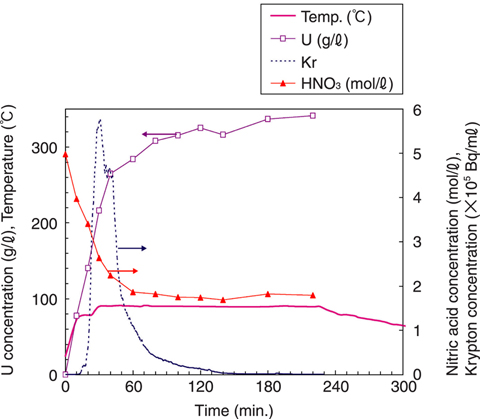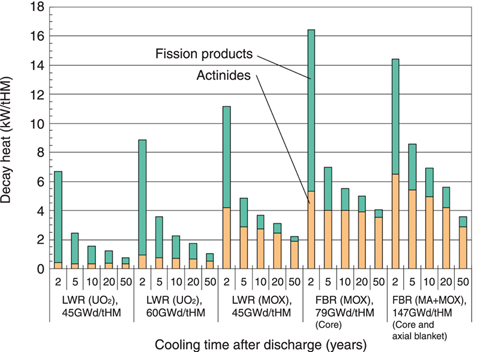
Fig.7-7 Results of dissolution tests of spent MOX fuel (41GWd/tHM)

Fig.7-8 Decay heat from various kind of spent fuels
In the future, high burn-up fuel and mixed oxide (MOX) fuel should be reprocessed. Since these fuels contain large quantities of fission products and plutonium, it is important to examine their influence on the dissolution of spent fuel and extraction process used in reprocessing. Furthermore, in order to improve economy and to reduce volume of radioactive waste, further research and development of reprocessing technology will be of great importance. In these efforts, a comprehensive survey and compilation of the basic data of reprocessing technology that has been determined will be of great use.
We have been studying the solution chemistry and chemical processes of actinides and fission products to find a basis for development of advanced fuel reprocessing. Experiments in fuel dissolution and extraction processes using actual spent UO2 and MOX fuels were carried out at Nuclear Fuel Cycle Safety Engineering Research Facility (NUCEF). These experimental results and basic data collected by literature survey were compiled and published as "Handbook on Process and Chemistry of Nuclear Fuel Reprocessing Version 2" in 2008.
In the first section of this handbook, basic data, such as solution density, viscosity, absorption spectra of actinide ions and etc. are given.
The next section describes results of dissolution experiments (Fig.7-7) and off-gas treatment tests using spent fuels of several burn-ups. Concentration changes of uranium and nitric acid during the dissolution were compared with our simulation model. Results of dissolution residue analysis are also given here.
Distribution behavior and redox reactions of important elements such as uranium, plutonium, neptunium etc. during the extraction process are reviewed, and our simulation code PARC, developed for solvent extraction studies, is explained. The results of NUCEF experiments and calculations with PARC given here agreed well with each other.
In addition to these data, we summarized fission product compositions and decay heat from various kinds of spent fuels (Fig.7-8), and plutonium polymerization and solvent degradation, which will become more important with regard to safety in the future.
It is expected that this handbook will be widely utilized as one technological basis for smooth and safe operation of plants and for research and development toward the next generation of nuclear plants, since it is a useful compilation of knowledge about reprocessing.